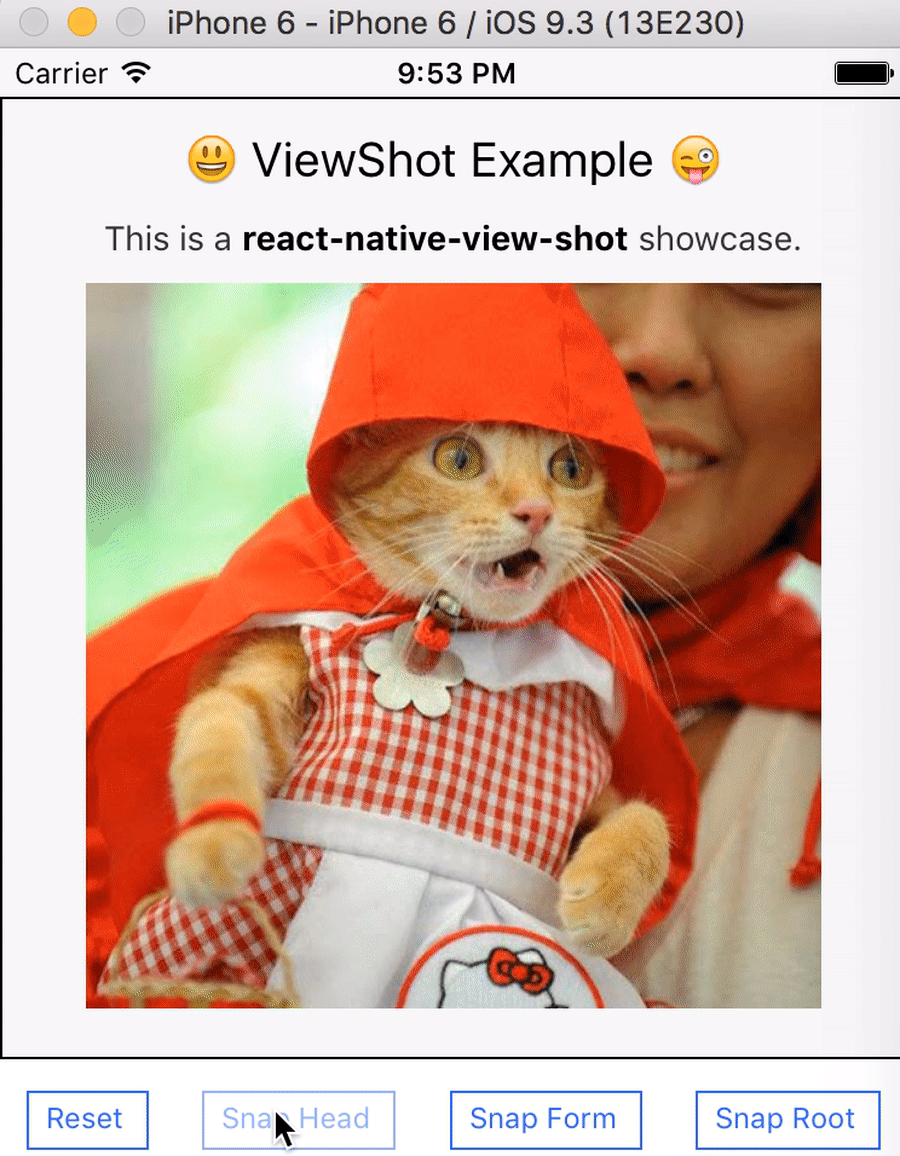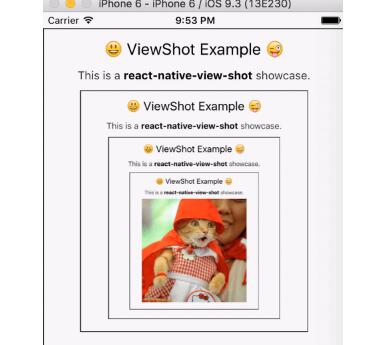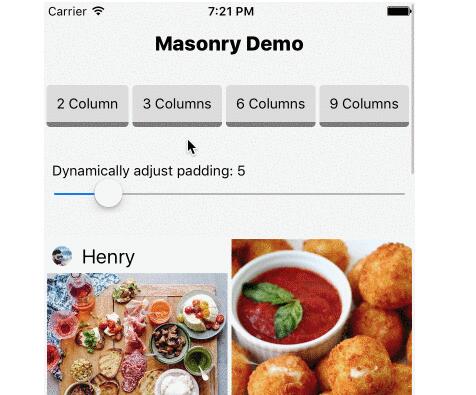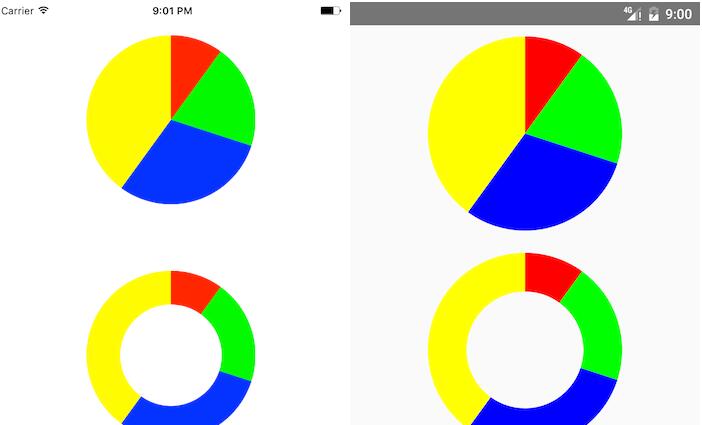react-native-view-shot
Snapshot a React Native view and save it to an image.

Install
yarn add react-native-view-shot
react-native link react-native-view-shot
Make sure react-native-view-shot is correctly linked in XCode (might require a manual installation, refer to React Native doc).
Recommended High Level API
import ViewShot from "react-native-view-shot";
class ExampleCaptureOnMountManually extends Component {
componentDidMount () {
this.refs.viewShot.capture().then(uri => {
console.log("do something with ", uri);
});
}
render() {
return (
<ViewShot ref="viewShot" options={{ format: "jpg", quality: 0.9 }}>
<Text>...Something to rasterize...</Text>
</ViewShot>
);
}
}
// alternative
class ExampleCaptureOnMountSimpler extends Component {
onCapture = uri => {
console.log("do something with ", uri);
}
render() {
return (
<ViewShot onCapture={this.onCapture} captureMode="mount">
<Text>...Something to rasterize...</Text>
</ViewShot>
);
}
}
// waiting an image
class ExampleWaitingCapture extends Component {
onImageLoad = () => {
this.refs.viewShot.capture().then(uri => {
console.log("do something with ", uri);
})
};
render() {
return (
<ViewShot ref="viewShot">
<Text>...Something to rasterize...</Text>
<Image ... onLoad={this.onImageLoad} />
</ViewShot>
);
}
}
// capture ScrollView content
class ExampleCaptureScrollViewContent extends Component {
onCapture = uri => {
console.log("do something with ", uri);
}
render() {
return (
<ScrollView>
<ViewShot onCapture={this.onCapture} captureMode="mount">
<Text>...The Scroll View Content Goes Here...</Text>
</ViewShot>
</ScrollView>
);
}
}
Props:
children: the actual content to rasterize.options: the same options as incaptureRefmethod.captureMode(string):- if not defined (default). the capture is not automatic and you need to use the ref and call
capture()yourself. "mount". Capture the view once at mount. (It is important to understand image loading won't be waited, in such case you want to use"none"withviewShotRef.capture()afterImage#onLoad.)"continuous"EXPERIMENTAL, this will capture A LOT of images continuously. For very specific use-cases."update"EXPERIMENTAL, this will capture images each time React redraw (on did update). For very specific use-cases.
- if not defined (default). the capture is not automatic and you need to use the ref and call
onCapture: when acaptureModeis defined, this callback will be called with the capture result.onCaptureFailure: when acaptureModeis defined, this callback will be called when a capture fails.
captureRef(view, options) lower level imperative API
import { captureRef } from "react-native-view-shot";
captureRef(viewRef, {
format: "jpg",
quality: 0.8
})
.then(
uri => console.log("Image saved to", uri),
error => console.error("Oops, snapshot failed", error)
);
Returns a Promise of the image URI.
viewis a reference to a React Native component.optionsmay include:width/height(number): the width and height of the final image (resized from the View bound. don't provide it if you want the original pixel size).format(string): eitherpngorjpgorwebm(Android). Defaults topng.quality(number): the quality. 0.0 - 1.0 (default). (only available on lossy formats like jpg)result(string), the method you want to use to save the snapshot, one of:"tmpfile"(default): save to a temporary file (that will only exist for as long as the app is running)."base64": encode as base64 and returns the raw string. Use only with small images as this may result of lags (the string is sent over the bridge). N.B. This is not a data uri, usedata-uriinstead."data-uri": same asbase64but also includes the Data URI scheme header.
snapshotContentContainer(bool): if true and when view is a ScrollView, the "content container" height will be evaluated instead of the container height.
releaseCapture(uri)
This method release a previously captured uri. For tmpfile it will clean them out, for other result types it just won't do anything.
NB: the tmpfile captures are automatically cleaned out after the app closes, so you might not have to worry about this unless advanced usecases. The ViewShot component will use it each time you capture more than once (useful for continuous capture to not leak files).
captureScreen() Android and iOS Only
import { captureScreen } from "react-native-view-shot";
captureScreen({
format: "jpg",
quality: 0.8
})
.then(
uri => console.log("Image saved to", uri),
error => console.error("Oops, snapshot failed", error)
);
This method will capture the contents of the currently displayed screen as a native hardware screenshot. It does not require a ref input, as it does not work at the view level. This means that ScrollViews will not be captured in their entirety - only the portions currently visible to the user.
Returns a Promise of the image URI.
options: the same options as incaptureRefmethod.



